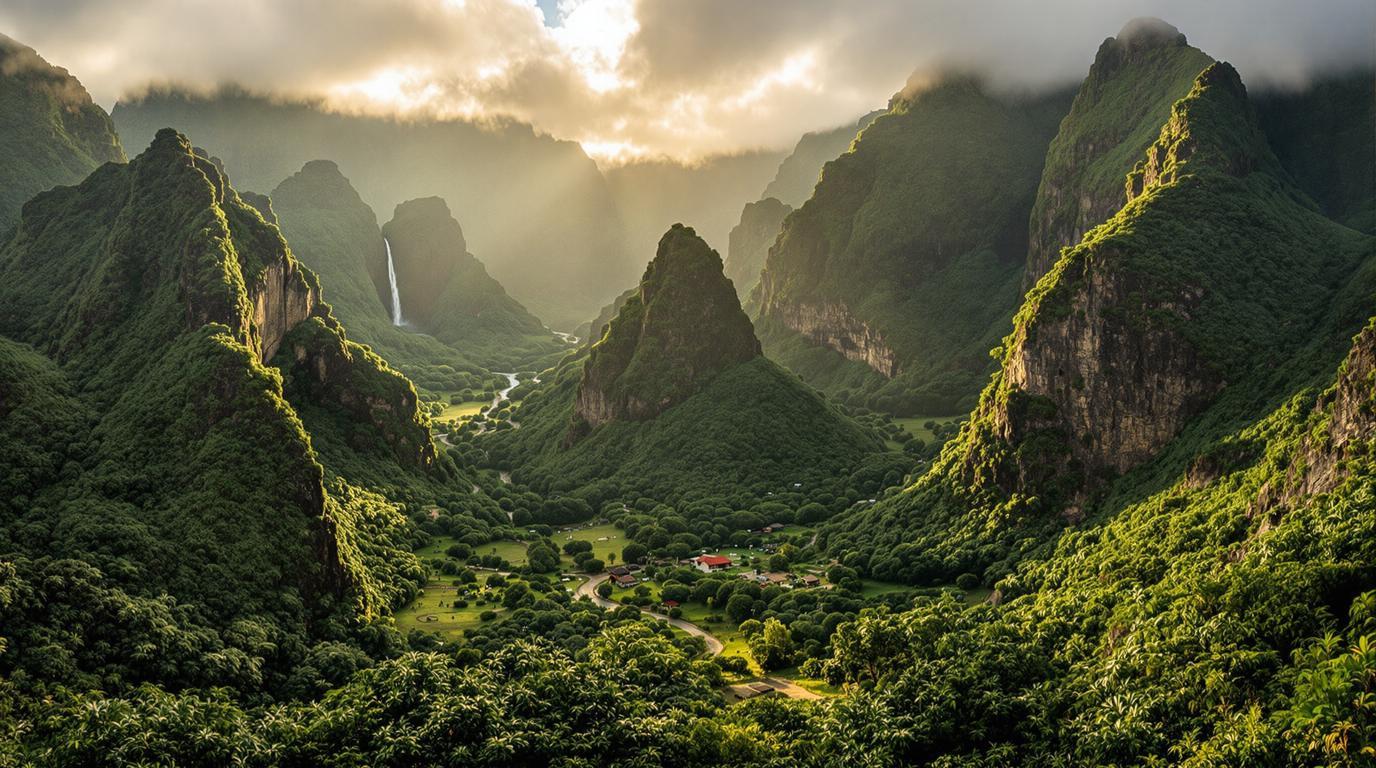The warm breeze rustles through bamboo as I step across ancient stone platforms that have witnessed centuries of Polynesian rituals. This isn’t the French Polynesia of glossy brochures and overwater bungalows. Here in the Marquesas Islands, nature’s raw power commands respect and travelers willing to venture beyond comfort zones are rewarded with experiences that haven’t changed in generations.
Where volcanic mountains meet ancient spirits
Six hundred miles northeast of Tahiti, the Marquesas Islands rise dramatically from the Pacific, their jagged peaks shrouded in mist and mystery. Unlike their more famous cousins Bora Bora and Moorea, these islands remain refreshingly untamed, with no protective reefs, no tranquil lagoons – just the thunderous meeting of ocean and volcanic shore.
“Our islands have teeth,” explains Kahu, my guide on Nuku Hiva, as we navigate a rutted dirt track. “They bite those who don’t respect them, but they nourish those who take time to understand.”
Archaeological sites dot the islands, where ancient tikis – many rivaling Easter Island’s moai in scale and significance – stand sentinel over valleys that once housed thousands before European contact decimated populations. These sacred spaces connect seamlessly with ancient archaeological sites in remote locations around the world where civilizations have left their mark on dramatic landscapes.
Discovering sanctuaries hidden from the world
The secret beach of Anaho Bay
After a punishing 90-minute hike across Nuku Hiva’s northern ridge, the payoff reveals itself: Anaho Bay stretches below, a rare white-sand crescent on an island dominated by black volcanic shores. The three-sided valley creates a natural amphitheater where horse herds roam free beneath mango and breadfruit trees.
Unlike the crowded beaches of Tahiti, I share this paradise with just two local fishermen mending nets in the shade. Their catch will supply tonight’s dinner at the single family-run pension nestled at the valley’s edge – the only accommodation option in this roadless paradise.
The forgotten valley of Hakaui
On Nuku Hiva’s western side lies a valley that feels frozen in time. A three-hour trek through dense jungle reveals Hakaui Valley, where thousand-foot cliffs create perpetual shadows over ancient stone platforms. This remote location harbors hidden Pacific waterfalls that remain undiscovered by most travelers, including the thundering Vaipo – at 1,148 feet, the highest waterfall in French Polynesia.
My local guide Teiki points out stone structures nearly swallowed by jungle. “My great-grandfather was born in this valley before everyone moved to the coast,” he explains. “The mana – the spiritual power – remains strongest here.”
Tasting traditions preserved by isolation
In the small village of Hatiheu, I’m invited to a traditional umu – an underground earth oven where food steams between heated rocks. The star is fafaru, raw tuna marinated in fermented seawater, a pungent delicacy that divides even locals. Alongside it comes breadfruit prepared six different ways, showcasing how isolation breeds culinary creativity.
At daybreak, I join fishermen hauling in nets filled with iridescent reef fish destined for the village’s communal table. This connection between sea and sustenance represents daily life in these islands where imported food remains expensive and scarce.
Practical wisdom for Marquesan journeys
Timing your adventure
Visit between July and November for drier conditions and the Festival of Marquesan Arts held every four years (next in 2027), when traditional dancers and tattoo artists gather from across the archipelago. December through February brings heavy rainfall that can make trails impassable.
Island connections
Air Tahiti flies to Nuku Hiva and Hiva Oa twice weekly from Papeete. For deeper exploration, the passenger-cargo vessel Aranui 5 offers 14-day voyages connecting all six inhabited islands. These islands exist in a state of splendid isolation similar to car-free islands with small populations in other remote corners of the world.
Finding yourself where the world falls away
As dusk falls over Hiva Oa’s Atuona Valley, I sit beside painter Paul Gauguin’s grave, contemplating what drew him – and countless seekers since – to these distant shores. The Marquesas offer no luxury resorts or predictable comforts, but instead provide a profound reminder of nature’s scale and humanity’s resilience. In a world of manufactured experiences, these islands remain gloriously, stubbornly authentic.
